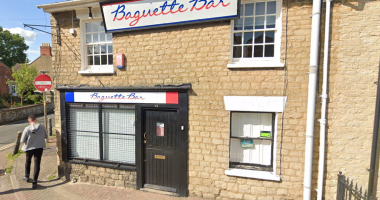FOOD prices have soared by 19% despite that the UK’s overall rate of inflation fell last month.
Some supermarket essentials cost up to 49% more than they did this time last year, according to the Office for National Statistics (ONS).
Consumer inflation fell to 10.1% in March easing some of the pressure on people’s finances.
It comes after it rose unexpectedly in February to 10.4% after falling for three months in a row.
Despite the fall in March, inflation still rose higher than experts predicted as food and drink prices continued to soar.
A forecast from the Office for Budget Responsibility last month states that inflation will fall to 2.9% by the end of the year.


But in the meantime, shoppers are battling high prices at the supermarket tills.
The price of milk, cheese and eggs combined has risen by 30% in the last twelve months.
In March 2022, two pints of whole milk set shoppers back £1.19 – but today it costs around 38% more at £1.64.
Six eggs cost the average shopper just 93p last March but now cost £1.23 – up 32%.
Most read in Money
The price of oils and fats has also shot up by 26% in the last twelve months.
Shoppers paid £1.31 for the average 250g block of butter in March 2022 but the same amount now costs £1.60 – up 23%.
The average price of bread has also shot up from 78p a loaf in March last year to 97p today.
We’ve listed how much the prices of 50 everyday supermarket essentials have risen since March 2022 below.
How much have your essentials gone up in price?
- Olive oil – 49.2%
- Sugar – 42.1%
- Low-fat milk – 38.8%
- Whole milk – 37.9%
- Sauces, condiments, salt, spices and culinary herbs – 33.7%
- Cheese and curd – 33.6%
- Eggs – 32%
- Frozen vegetables – 30.2%
- Pork – 25.2%
- Cocoa and powdered chocolate – 24.5%
- Ice lollies and ice cream – 24.3%
- Pasta and couscous – 24.1%
- Flour – 23.4%
- Butter – 22.7%
- Yoghurt – 21.9%
- Jams, marmalades and honey – 20.9%
- Ready meals – 20.9%
- Fresh or chilled vegetables – 20.5%
- Potatoes – 20.4%
- Bread and cereals – 19.4%
- Fresh or chilled fish – 19%
- Tea – 19%
- Bread – 18.9%
- Dried vegetables, preserved or processed vegetables – 18.3%
- Mineral or spring waters – 18.3%
- Preserved or processed fish and seafood – 18.2%
- Poultry – 18%
- Crisps – 17.9%
- Pizza and quiche – 17.2%
- Dried, salted or smoked meat – 16.9%
- Margarine and other vegetable fats – 15.6%
- Coffee – 15.6%
- Beef and veal – 14.8%
- Chocolate – 14.6%
- Fruit and vegetable juices – 14.1%
- Rice – 13%
- Soft drinks – 12.2%
- Confectionery products – 11.9%
- Fresh or chilled fruit – 11.6%
- Frozen seafood – 11.2%
- Preserved fruit and fruit-based products – 10.8%
- Breakfast cereals – 9%
- Beer – 7.6%
- Rolling tobacco – 7.1%
- Lamb and goat – 6.4%
- Spirits – 6.1%
- Dried fruit and nuts – 5.8%
- Wine – 4.8%
- Cigarettes – 4.3%
- Cigars – 4.1%
How can I cut my grocery costs?
Research what you need before you go. Prices always vary by supermarket and it can pay to change up your shop.
One shopper ditched going to supermarkets altogether in favour of their local wholesaler, that way they could stock up in bulk, at lower prices.
While everyone compares the total cost items to get the best deal – many are still caught out by not paying attention to the unit costs.
Unit prices are meant to make it easier for shoppers to compare similar items of different sizes.
You should be able to see the unit cost of the product where its price is shown – it may be in small print.
Compare this with the unit cost of a similar item – for example the cost per 100ml or two different types of cola – and choose the item with the lowest unit cost.
Signing up for a supermarket loyalty card can often help you to get cheaper prices on essentials.
If you have a loyalty card, you may find you can get extra points or discounts, particularly if you buy petrol from the same supermarket.
The Sun recently compared supermarket loyalty cards.
You can also cash in on reduced foods like yellow sticker bargains – these will be items reduced because they’re about to meet their best-before date.
They’ll still be safe to eat or freeze to make them last longer, but it means you can pick up the same products at an even cheaper price.
Sometimes even timing your shop to stock up just as items are discounted on the shelves can help you get the best bargains – lots of shoppers have said this is in the evening typically.


But being smart about how you shop isn’t the only way to slash spending.
Especially as prices continue to rise, there are schemes in place to help the most hard-up buy essentials.









